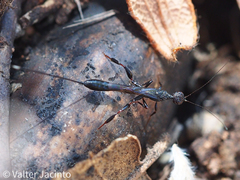Buff-tailed bumblebee
Bombus terrestris
Bombus terrestris, commonly known as the buff-tailed bumblebee or, in the Comunidad Valenciana, as the 'abejorro común', is a species of bumblebee native to Europe. This insect is a crucial pollinator for various plants and crops, playing a vital role in the local ecosystem.
Characteristics of Bombus terrestris include:
- Appearance: These bumblebees are large, robust, and hairy. They are easily identifiable by their distinctive yellow bands and the characteristic buff-colored tail from which their common name is derived.
- Distribution: While widespread throughout Europe, Bombus terrestris can also be found in the Comunidad Valenciana, where they thrive in various habitats, including gardens, parks, and agricultural lands.
- Behavior: They are social insects, living in colonies that can contain several hundred individuals. The colonies are typically founded by a single queen in the spring.
- Diet: The buff-tailed bumblebee forages for nectar and pollen from a diverse range of flowering plants, contributing significantly to pollination.
- Lifecycle: Their lifecycle begins in early spring and concludes in late autumn. The queen emerges from hibernation to establish a new colony, then lays eggs that develop into workers to support the colony.
The presence of Bombus terrestris in the Comunidad Valenciana reflects the area's rich biodiversity and supports the cultivation of both ornamental and agricultural plants. Conserving their habitat is essential for maintaining the ecological balance and agricultural productivity.







